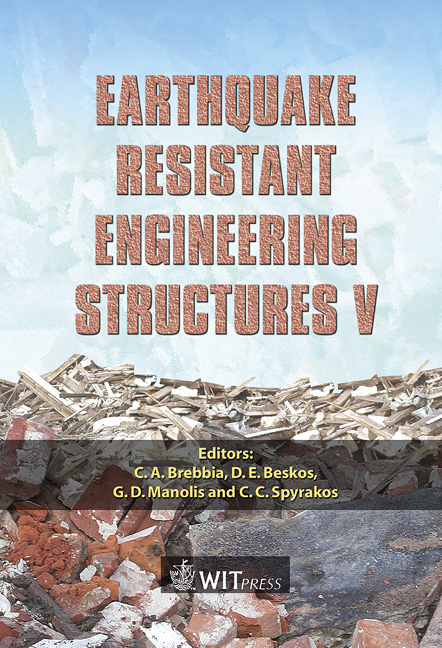Seismic Response Analyses Of Rocking Structural Systems With Yielding Base Plates By The Finite Element Method
Price
Free (open access)
Transaction
Volume
81
Pages
9
Published
2005
Size
1,102 kb
Paper DOI
10.2495/ERES050321
Copyright
WIT Press
Author(s)
M. Midorikawa, T. Azuhata, T. Ishihara & A. Wada
Abstract
It is pointed out that the effects of rocking vibration accompanied with up-lift motion may reduce the seismic damage of buildings subjected to severe earthquake motions. Based on these findings, we have been developing the rocking structural systems that cause the rocking vibration under appropriate control during a major earthquake motion. One of these systems has weak base plates at the bottom of each column at the first story of steel frames. When the weak base plates yield during a major earthquake motion, the frames cause the rocking vibration. In this paper, the seismic responses of the base-plate-yielding rocking systems are examined by finite element analysis. A three-story, one-by-two bay braced steel frame of a half scale is analyzed, that was previously tested by a shaking table. According to the results of the previous tests, the base plate yielding systems reduced effectively the seismic responses of steel frames. The total height of the test frame is 5.3 meters, each floor height is 1.7 to 1.8 meters, each floor plan is 3 by 4 meters, and the total weight is 15.0 tons. The yielding base plates are installed at the bottom of each column at the first story. One of the three frames in the test direction is modelled in the analysis. The base plates and the columns of the first story are modelled as shell elements. The columns and girders at the second and third stories are modelled as beam elements, and the bracing members as truss elements. The earthquake ground motion is the record of the 1940 El Centro NS component whose time scale is shortened to 1/√2. From the analytical results, it is concluded that the seismic responses of the base-plate-yielding rocking systems are appropriately simulated comparing with the experimental results obtained from the previous shaking table tests. Keywords: seismic response, dynamic analysis, finite element method, seismic response reduction, rocking vibration, up-lift, steel frame, base plate, yielding.
Keywords
seismic response, dynamic analysis, finite element method, seismic response reduction, rocking vibration, up-lift, steel frame, base plate, yielding.





